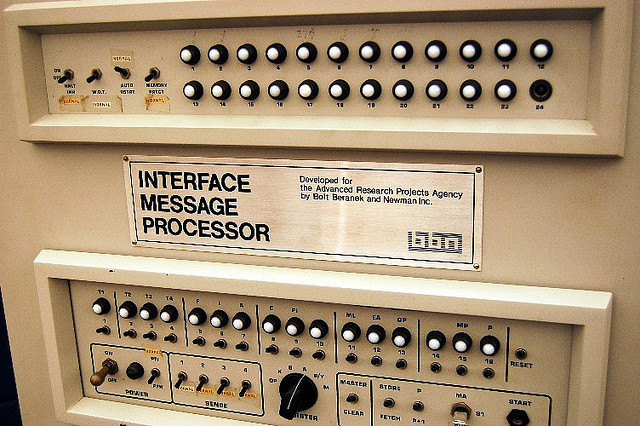
If you are like me I have a poor memory of when various technologies came into play. So here is a brief and very incomplete summary of key Internet dates. What have I missed?
| 1969 | A computer in the University of California, LA was connected to a computer to the Standford Research Institute in Menlo Park, CA four hundred miles away. This led to a total of four academic institutions networking themselves through leased phone lines and utilising ‘packet switching’ technology for the first time. |
| 1971 | Ray Tomlinson, a programmer at Bolt, Nernek and Newman developed some rules for the first e-mail. The first message is lost to time, but Tomlinson did adopt the @ symbol and created the “user@host” e-mail addressing system still in use today. |
| 1975 | The network had grown to 57 locations making use of ‘Interface Message Processors’ across the United States, and one node in London. The network was known as ARPANET (Advanced Research Projects Acing). |
| 1979 | Two grad students from Duke University created the technology to allow their computers to communicate over standard telephone lines rather then relying upon very very expensive leased lines. |
| 1981 | The ARPANET had grown to 213 computers and was adding a computer every twenty days. |
| 1983 | The old packet switching protocol was replaced by TCP/IP to provide a common internetwork protocol. By this time the various networks of computers across academic, government and military institutions were collectively known as the Internet. |
| 1990 | Tim Berners-Less wrote a program called WorldWideWeb. To help make it easier for fellow physicists to communicate with one another. It was based around the standard of HTML and HTTP. It was made widely and freely available in 1991. |
| 1993 | CERN declared that the WorldWideWeb protocols devised by Berners-Lee would be royalty-free, thereby making the web open. |
| 1994 | Mosaic was browser software written by Marc Andreessen and Eric Bina for UNIX which was then rewritten to run in PC and Macintosh machines. We were getting close to universal standards for the world wide web. This was renamed Netscape Navigator as Andreessen took his university creation into the commercial sector. |
| 1995 | Netscape had 40 million users |
| 1997 | Jorn Barger coined the word ‘weblog’. |
| 1997 | SixDegrees.com was launched – a selection of profile pages used to link users together (it was to close in 2000) |
| 1998 | 70 million web users |
| 1999 | Peter Merholz coins the term ‘blog’ – the same year as Evan Williams and Meg Hourihan launched blogger.com a platform made for web loggers/ |
| 2000 | 250 million web users |
| 2002 | Friendster was an early dating website – again working around user created profiles which allowed friends to communicate and share ideas with one another. By May 2003 Friendster had 300,00 users |
| 2004 | Disgruntled users of Friendster (it had technical issues) decamped to MySpace. By the end of the year it had grown to be bigger than Friendster. |
| 2004 | Mark Zuckerberg launched Facebook for his friends at Harvard University. Early on admission to Facebook was limited to a few chosen academic institutions. |
| 2005 | MySpace had 25 million users and was sold to News Corps for $850 million. |
| 2006 | 1 billion internet users and 40 million bloggers |
| 2006 | Facebook open to anyone over the age of 13 to use. |
| 2006 | Micro-blogging site Twitter launched in July. |
| 2007 | Tumblr launched |
| 2010 | Google+ launched |
| 2012 | Facebook is the most popular social-networking site in 127 out of 137 countries. Russian and China have their own heavily censored and controlled variations of Facebook. |
| 2013 | Twitter has more than 200 million active users. |
To be continued…
